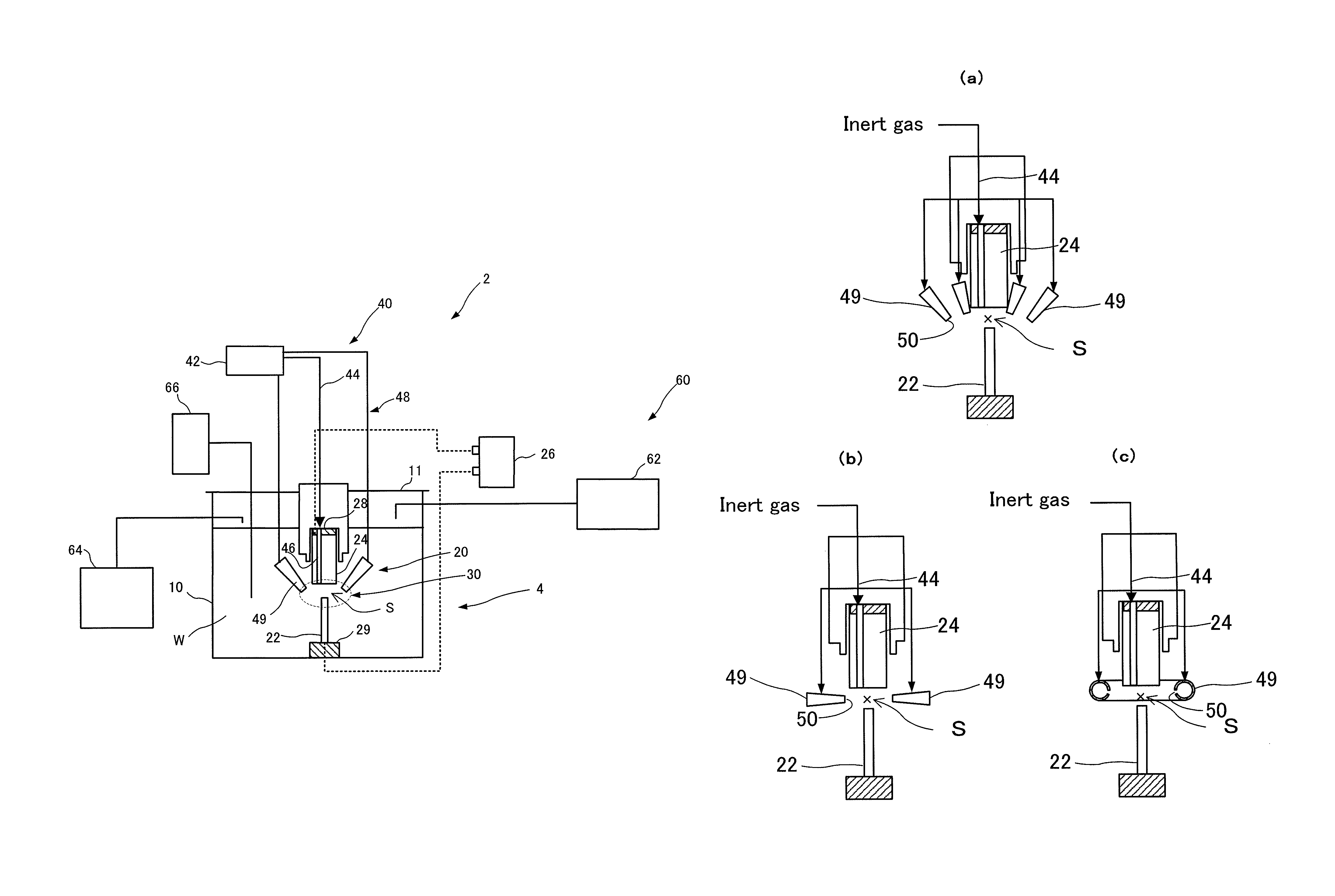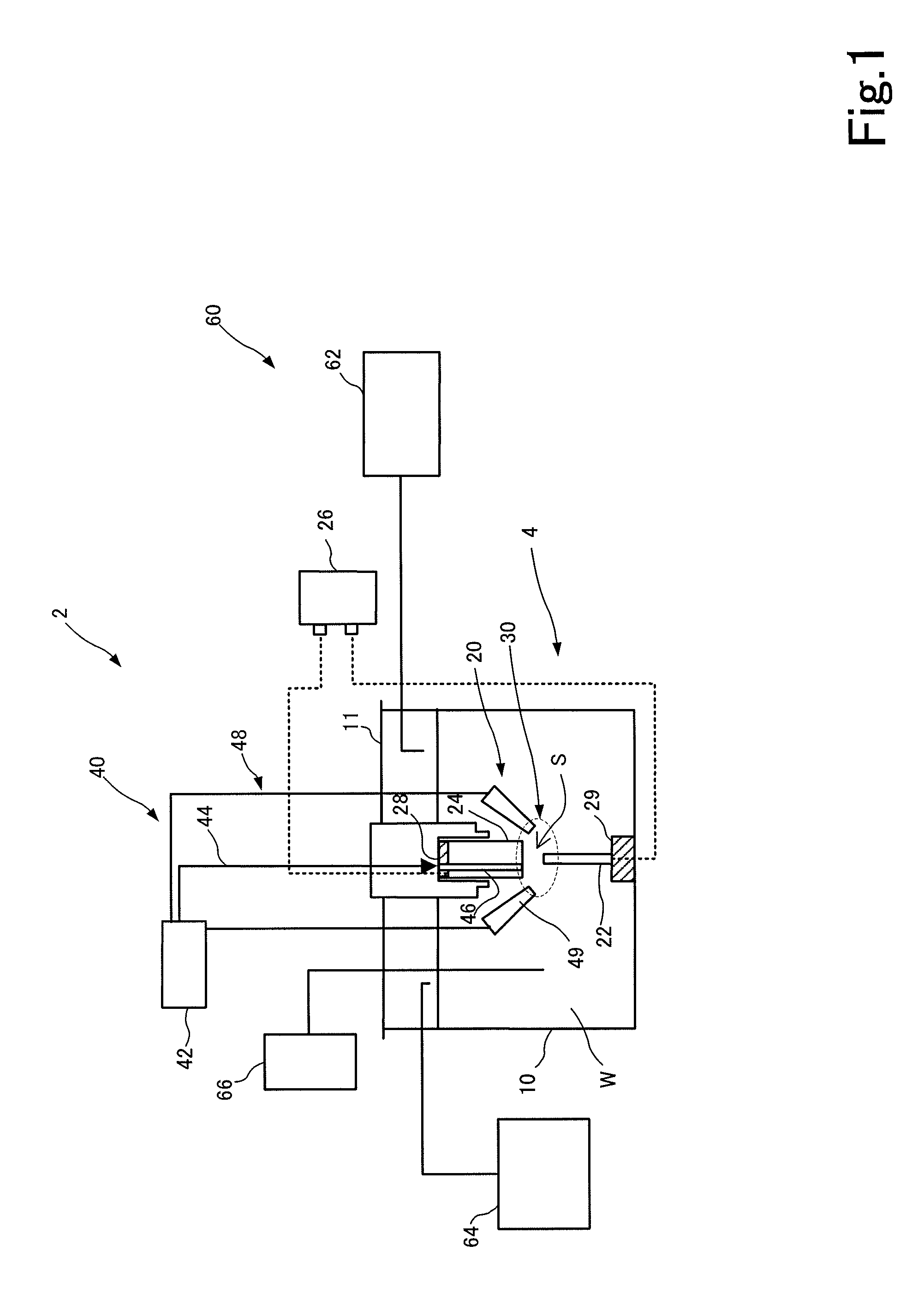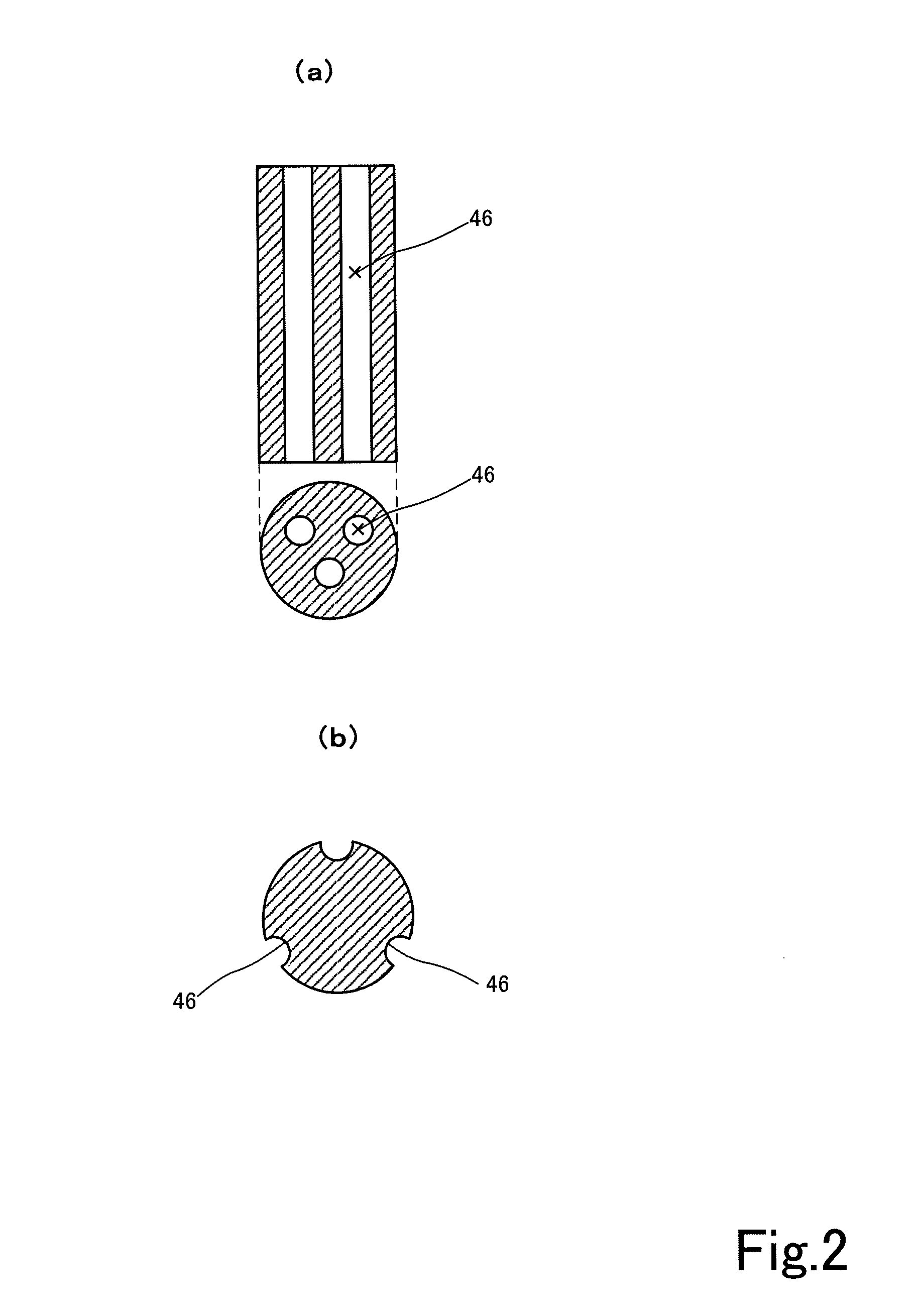Apparatus for producing carbon nanomaterial, and use thereof
a carbon nanomaterial and apparatus technology, applied in the direction of chemistry apparatus and processes, alkali metal compounds, other chemical processes, etc., can solve the problems of high investment in equipment for maintaining vacuum or low temperature, high cost of maintenance and control, and small carbon nanomaterial yield related to the consumed amount of carbon starting material, etc., to achieve low cost, efficient production, and good efficiency
- Summary
- Abstract
- Description
- Claims
- Application Information
AI Technical Summary
Benefits of technology
Problems solved by technology
Method used
Image
Examples
example 1
[0101]The present example is explained as a preferred example of the apparatus 2 for producing a carbon nanomaterial which is shown in FIG. 1. The graphite positive electrode 22 and the negative electrode 24 are disposed in the aqueous medium tank 10 with a water depth of about 30 cm so that the electrodes face each other in the vertical direction in relation to force of gravity at a distance of 1 mm from each other. The graphite positive electrode has a cylindrical shape with a diameter of 6 mm and a length of 100 mm and is obtained using 7 g of carbon rods with a carbon purity of 99.999%. The aqueous medium tank is filled with 30 L of aqueous solution, and the aqueous medium tank is then sealed with a lid. A DC voltage of 20 V, 140 A is applied to the graphite positive electrode and the negative electrode. Carbon nanohorns are then synthesized by supplying nitrogen gas at 5 L / min at the initial stage of arc discharge (3 sec to 5 sec) to the introducing path 46 of the inert gas sup...
example 2
[0106]In the present example, the electric conductivity of the carbon nanohorns obtained in Example 1 is estimated. A plurality of types of buckypaper is fabricated by the following method by using commercially available carbon nanotubes (purity 99%, Baytubes (trade name), manufactured by Bayer) and the carbon nanohorns obtained in Example 1.
[0107]Thus, buckypaper 1 (thickness 37 μm) is fabricated by preparing a carbon nanotube dispersion in which carbon nanotubes are dispersed in deionized water or pure water by ultrasonic treatment by using appropriate gum arabic, subjecting the dispersion to solid-liquid separation, as appropriate, by centrifugal separation to adjust the concentration (0.2 wt %), then filtering under 6 atm, and drying the carbon nanotubes separated on a polycarbonate filter (pore diameter 0.45 μm) under reduced pressure at room temperature (about 20° C. to 23° C.).
[0108]Buckypaper 2 is fabricated by using a carbon nanohorn dispersion of Example 1 that has been ac...
example 3
[0117]In the present example, friction properties of the carbon nanohoms obtained in Example 1 are evaluated. Thus, a friction coefficient μ in a low-load range is measured between two steel plates. The following device and method are used for the measurements.
[0118]1. Device
[0119]Steel gauge block: length 4 mm (weight 8 g), 5 mm (weight 10 g), 10 mm (weight 21 g), 20 mm (weight 49 g), and 30 mm (weight 73 g); stainless steel×90CrMoV18; surface hardness 56HRC; Rz=0.1 μm.
[0120]Steel base: stainless steel×90CrMoV18; surface hardness 56HRC; Rz=0.1 μm.
[0121]Spring meter: 1 g to 8 g / 1 N to 40 N (Correx).
[0122]Force sensor: Transcal 7280 (up to 20 N) (Burster).
[0123]Digital meter: digital meter manufactured by Maul.
[0124]PELT meter: roughness and topography measurements (Mahr).
[0125]2. Method
[0126]The weight of the gauge block is measured with the digital meter. Then the surface roughness of the gauge block and the steel base is measured with the PELT meter, and then the friction force at...
PUM
| Property | Measurement | Unit |
|---|---|---|
| angle | aaaaa | aaaaa |
| angle | aaaaa | aaaaa |
| diameter | aaaaa | aaaaa |
Abstract
Description
Claims
Application Information
 Login to View More
Login to View More - R&D
- Intellectual Property
- Life Sciences
- Materials
- Tech Scout
- Unparalleled Data Quality
- Higher Quality Content
- 60% Fewer Hallucinations
Browse by: Latest US Patents, China's latest patents, Technical Efficacy Thesaurus, Application Domain, Technology Topic, Popular Technical Reports.
© 2025 PatSnap. All rights reserved.Legal|Privacy policy|Modern Slavery Act Transparency Statement|Sitemap|About US| Contact US: help@patsnap.com



